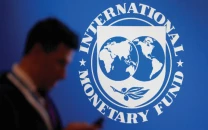C/A slips into $420m deficit
It is highest shortfall since June 2024; C/A in surplus at $682m for 7MFY25

Pakistan's current account slipped into a deficit of $420 million in January 2025, marking the highest monthly deficit since June 2024. This comes after the country posted a surplus of $474 million in December 2024, reflecting renewed pressure on the external account amid rising imports and foreign payment obligations.
Supported by robust remittances, the country's current account posted a surplus of $682 million during the first seven months of fiscal year 2024-25 (7MFY25), a significant turnaround from the $1,801 million deficit recorded in the same period of last year.
Pakistan's current account balance for January 2025 recorded a deficit of $420 million, marking a 4% year-on-year increase compared to the $404 million deficit in January 2024.
Export of goods improved by 10% year-on-year to $2.94 billion but imports of goods rose at a faster pace of 17% to $5.45 billion. This resulted in a widening trade deficit in goods, which increased by 26% year-on-year to $2.51 billion, reflecting pressure on the external account.
The balance on trade in services remained in deficit at $315 million, which represents a 10% year-on-year increase. Exports of services stood at $691 million, while imports of services increased to $1.01 billion. The overall balance on trade, which includes both goods and services, widened to $2.83 billion from $2.27 billion in January 2024, showing a 24% increase.
The primary income balance posted a deficit of $735 million, up 12% year-on-year, indicating higher outflows. However, a key positive factor was the strong workers' remittances, which surged by 25% to $3 billion. The overall secondary income balance stood at $3.15 billion, reflecting a 24% increase, driven by remittances and other private transfers.
On a cumulative basis, for the first seven months of FY25, the current account recorded a surplus of $682 million, a significant improvement from the $1.8 billion deficit seen in 7MFY24. This positive shift was largely supported by higher secondary income inflows, particularly remittances, and a moderate rise in exports.
However, the increasing trade deficit remains a challenge, highlighting the need for sustained export growth and controlled import demand to maintain external account stability.
The primary income balance recorded a deficit of $735 million in January 2025, reflecting a 12% increase compared to the $658 million deficit in January 2024. In 7MFY25, the primary income deficit amounted to $5.23 billion, compared to $4.71 billion in the same period of last year.
Experts say a widening primary income deficit suggests increasing payments of foreign loans, interest cost and profit repatriation by foreign investors. This puts additional pressure on Pakistan's external account.
Since primary income largely consists of interest payments on external debt, a growing deficit indicates rising debt-servicing costs. This could lead to further borrowing, increasing the overall external debt burden.
A higher deficit may indicate higher profit repatriation by foreign companies operating in Pakistan. While this suggests that businesses are making profits, it also implies that more funds are flowing out instead of being reinvested domestically.
A persistent primary income deficit contributes to a higher current account deficit unless balanced by strong remittances and export growth. If left unchecked, it could lead to currency depreciation.
Pakistan witnessed a net foreign direct investment (FDI) of $194 million in January 2025, reflecting a 15% month-on-month (MoM) increase from $170 million in December 2024. This improvement comes as FDI rose to $239 million, marking a 12% year-on-year (YoY) increase, while outflows dropped significantly to $45 million, down 87% YoY.
For 7MFY25, net FDI surged by 56% YoY, reaching $1.524 billion compared to $976 million during the same period in FY24.
However, portfolio investments in public securities showed a net outflow of $85 million in January, compared to an inflow of $59 million in January 2024, indicating volatility in foreign investments in government debt securities.
Overall, total foreign investment in January stood at $99 million, a reversal from the $107 million outflow recorded in January 2024. The data signals continued momentum in FDI, though challenges remain in portfolio investment trends.
A positive development in the current account was the rise in secondary income credit, primarily driven by workers' remittances. Remittances surged by 25% year-on-year to $3 billion, thanks to recent years' economic slowdown that pushed more than 2 million out of the country in search of decent livelihood. Overall, the secondary income balance stood at $3.2 billion, a 24% increase from January 2024.
On a cumulative basis, the current account for the 7MFY25 recorded a surplus of $682 million, a significant turnaround from the $1.8 billion deficit recorded in the same period of last year. This improvement suggests some stability in external financing, aided by strong remittance inflows and a moderate rise in exports. However, the widening trade deficit remains a concern and sustaining the current account stability will depend on further export growth and controlled import demand.


















COMMENTS
Comments are moderated and generally will be posted if they are on-topic and not abusive.
For more information, please see our Comments FAQ